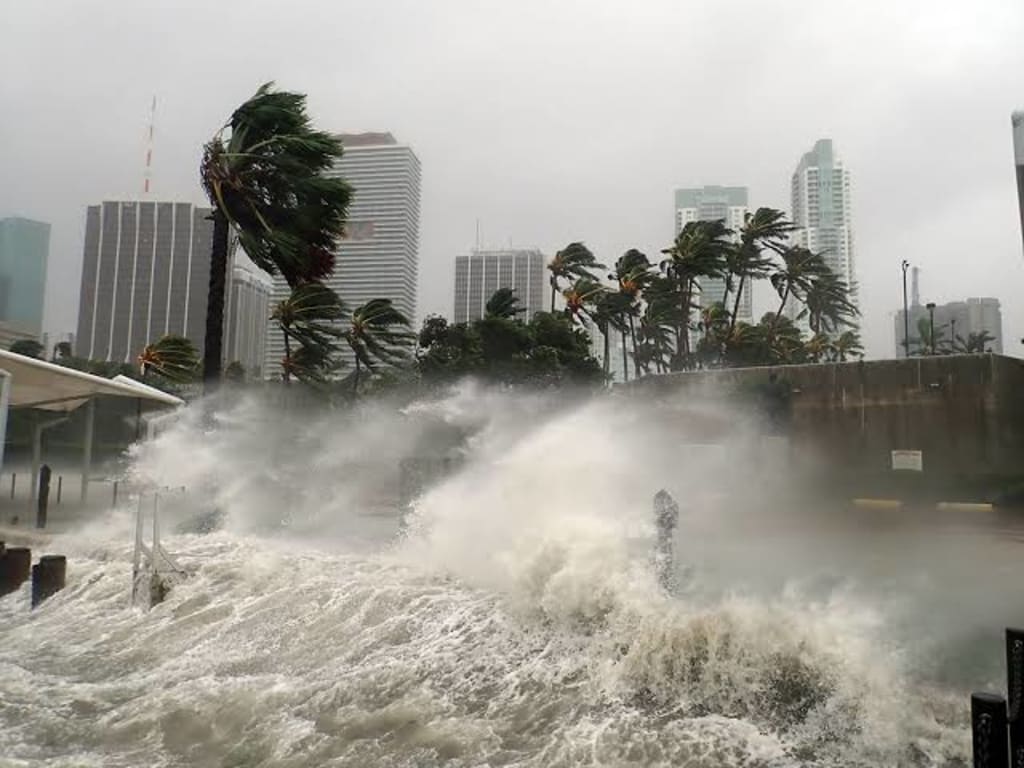Through Hurricanes and Climate Changes
How Hurricane Intensity Alters Due to Climate Change

Introduction:
Hurricanes are among the most powerful and destructive natural phenomena on Earth. These massive storms, fueled by warm ocean waters and atmospheric conditions, can leave a trail of devastation in their wake. In recent years, concerns about the impact of climate change on hurricane intensity have grown. Understanding the relationship between climate change and hurricanes is crucial for preparedness, mitigation, and inspiring collective action. In this article, we will explore how hurricane intensity is altered by climate change, using real-life examples to engage and inspire readers.
The Changing Dynamics of Hurricane Intensity:
1. Warmer Ocean Waters:
As global temperatures rise due to climate change, so do ocean temperatures. Warm ocean waters act as fuel for hurricanes, providing the energy necessary for their formation and intensification. Warmer waters lead to increased evaporation, resulting in more moisture in the atmosphere and potentially more intense rainfall during hurricanes.
Real-Life Example: Hurricane Harvey
In 2017, Hurricane Harvey made landfall in Texas, causing catastrophic flooding. Scientists found that the unusually warm waters in the Gulf of Mexico, fueled by climate change, contributed to the rapid intensification of Harvey into a Category 4 hurricane. The storm unleashed record-breaking rainfall, resulting in widespread flooding and immense damage.
2. Changing Atmospheric Conditions:
Climate change affects atmospheric conditions, which can influence hurricane intensity in various ways. One factor is the alteration of wind patterns, such as the jet stream, which can impact the formation and track of hurricanes. Additionally, rising global temperatures contribute to the expansion of the tropics, allowing hurricanes to form and intensify at higher latitudes.
Real-Life Example: Hurricane Irma
In 2017, Hurricane Irma struck several Caribbean islands and the southeastern United States. Its record-breaking intensity was partially attributed to warmer sea surface temperatures caused by climate change. The storm's path was also influenced by changes in atmospheric circulation patterns, demonstrating the complex interplay between climate change and hurricane behavior.
3. Rising Sea Levels:
Climate change-induced sea-level rise is a significant factor in exacerbating the impacts of hurricanes. Higher sea levels lead to more extensive storm surge, which occurs when hurricanes push seawater onto coastal areas. Storm surge can cause severe flooding, property damage, and loss of life.
Real-Life Example: Hurricane Katrina
Hurricane Katrina, a Category 5 hurricane that struck the Gulf Coast in 2005, showcased the devastating effects of storm surge. The combination of the storm's intensity and the region's vulnerable geography resulted in catastrophic flooding in New Orleans. Scientists suggest that rising sea levels, influenced by climate change, played a role in the extent of the storm surge and subsequent damage.
The Call for Collective Action:
Understanding the link between climate change and hurricane intensity is not enough; it must inspire collective action to address the underlying causes and mitigate future impacts.
1. Climate Change Mitigation:
Reducing greenhouse gas emissions is crucial to combatting climate change and minimizing its impact on hurricanes. Transitioning to renewable energy sources, promoting energy efficiency, and adopting sustainable practices can contribute to a healthier planet and help reduce the intensity of hurricanes in the long run.
2. Resilient Infrastructure and Preparedness:
Investing in resilient infrastructure and disaster preparedness is essential to safeguard vulnerable coastal communities. This includes measures such as constructing buildings that can withstand high winds, improving early warning systems, and implementing effective evacuation plans. Real-life examples of communities proactively adapting to the changing risks can serve as inspiring models for others to follow.
3. Adaptation Measures:
Communities in hurricane-prone regions must implement robust adaptation strategies. This includes investing in resilient infrastructure, enhancing early warning systems, and improving disaster response capabilities. By preparing for the potential impacts of stronger hurricanes, communities can reduce vulnerability and safeguard lives and livelihoods.





Comments
There are no comments for this story
Be the first to respond and start the conversation.